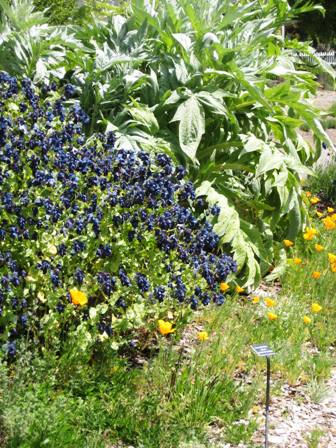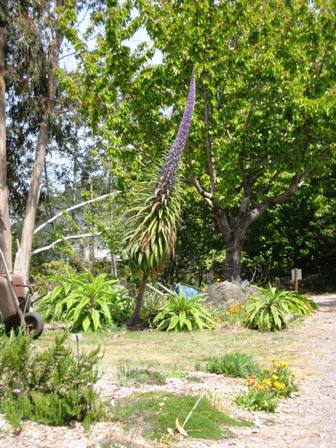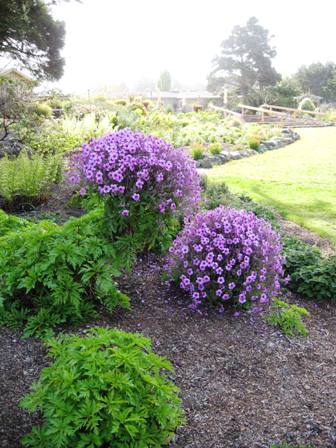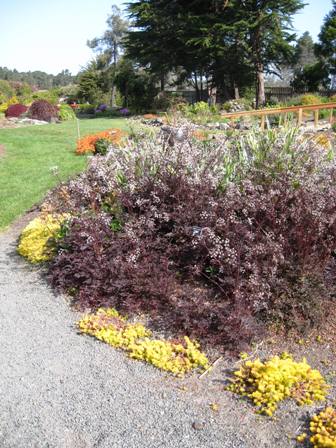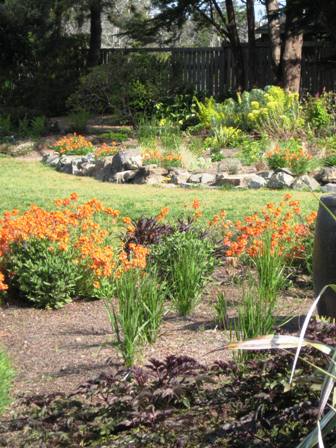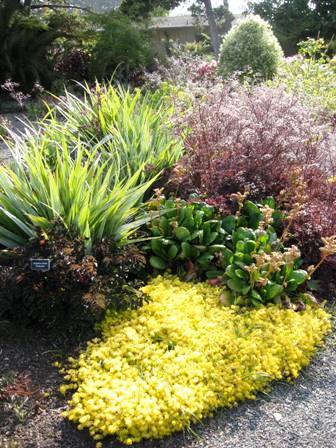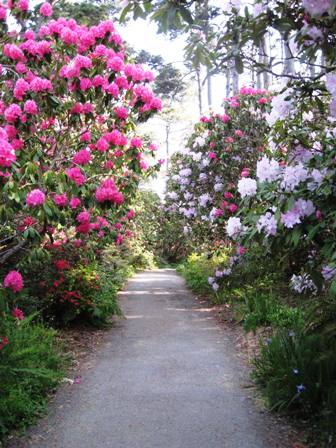Last month, I went to visit an old gardening friend of mine, Chris Woods, who has recently become the head of Mendocino Coast Botanical Garden. As you may recall, Chris was the visionary behind the transformation of Chanticleer from a private estate to one of the great American public gardens as we know it today. From chatting with Chris prior to my visit, I knew that this new endeavor of his was not going to be a repeat of his work at Chanticleer for several reasons.
First, Mendocino Coast Botanical Garden is the ONLY public garden in the continental United States that is sitting directly on the Pacific Ocean. As you wander about the 47 acres, even if the ocean is not in sight, the sounds and smells of it totally envelope you. Secondly, the climate in Northern California (3-4 hours North of San Francisco) is an ideal place to garden: specimens are in bloom throughout the entire year. And because of its maritime climate, the specimens grow to heights and widths that those of us on the Eastern seabord can only dream about. Certain plant material whose beauty and hardiness that I have marveled at over the years on visits to England and Ireland are minimally as large and plentiful here, which is no small feat.
Look at the size of the specimens in the photos below of Cerinthe major purpurea and Cynara cardunculus. I have been more than thrilled over the years when I tried growing Cerinthe major purpurea from seed and was able to cajole some sparse blooms out if it for a duration of a few weeks in the spring. In this climate, it grows with such abandon! And how about that Echium? It appears to be either candicans or pinnifolium. But whichever one it is, it surely looks like it’s on steroids!!
The diversity of its natural setting is overwhelming. There are manicured gardens, a coastal pine forest, fern covered canyons and a plethora of flowers overlooking the Pacific Ocean. Also, the diversity of the birds, over 100 species, is a haven for any birdwatcher. And all of us whale watchers can participate in viewing the whales wallowing about in the ocean.
So, when I spoke with Chris and asked him about the changes he was making in the gardens prior to my arrival, his response was (and I am paraphrasing) “I am just getting to know them. It’s like a relationship with a person. I need to take time to become familiar with these gardens before making changes.” This statement, of course, made perfect sense and is something all of us gardeners can learn from. Take your time and slow down when you are working on your garden, particularly if you are acquiring a new property. Familiarize yourself with it, get to know its contours, listen to what it is telling you, so that whatever design and planting you end up doing will be respectful of the land’s innate traits.
But in truth, Chris has already started transforming one area into what he is saying is his first project, a sweeping perennial garden. As shown in the photos below, he is using plant material, such as the apricot colored wallflowers in great quantities, as he has always done. He is also designing this garden with yellow and burgundy as its base colors (a contrasting combination that is one of my favorites).
As I meandered around the garden on the first day (when I arrived late in the afternoon), I became totally immersed in the rhododendrons. They enveloped me as I walked through what I can only call a natural woodland area: it was filled to capacity with a collection of ferns, mahonias and a stream of natural water whose sound added a serene quality to this already zen like setting. In truth, I have never been a big fan of rhododendrons. Only upon visiting Ireland did I begin to take notice of their natural beauty. In this garden, they certainly did grab my attention and more. Below are photos of some of these beauties.
I only visited with Chris for a weekend, which meant I had just two days to be in the garden. Like visiting an art museum, there was just way too much stimuli for me to digest in that short period of time. This is a garden that I will need to return to visit several times over the years in order to begin to fully understand and appreciate its complexity. The raw beauty is evident. And although Chris has several challenges ahead of him because his funds are limited (unlike Chanticleer which is privately funded and has a substantial endowment), there is no doubt in my mind that within the next 10 years, Mendocino Coast Botanical Garden will be considered yet another great American garden that Chris has left his imprint on. For more information, click on: www.gardenbythesea.org



